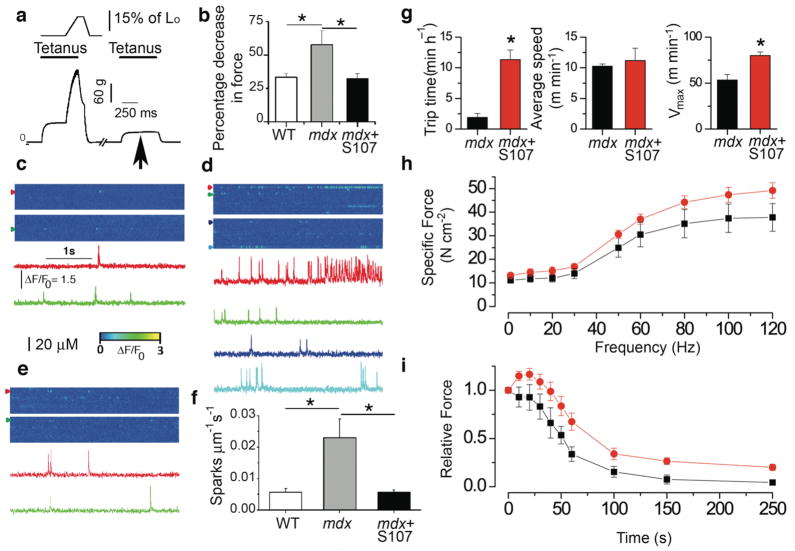Figure 4. Preventing RyR1 leak with S107 reduces Ca2+ leak, enhances muscle force, and voluntary exercise in mdx mice.
(a) Isometric and eccentric force production in EDL muscle in situ in anesthetized mice (Supplementary Methods, online). Typical recording from an mdx mouse EDL muscle (bottom graph) indicating a decline in force production during tetanus following mechanical stress (arrow). (b) Effect of oral S107 on decrease in force production in mdx mice (S107, 0.25 mg ml−1, in the drinking water for 10 days prior to testing, n = 5 for each group). Spontaneous Ca2+ sparks recorded in EDL muscles from: WT (c), vehicle treated mdx (d), and S107 treated mdx mice (e). Representative ΔF/F0 images (top) and fluorescence time courses (bottom) at different triads (colored arrow heads). (f) Spark frequency (n = 5 mice for each condition, 3–4 fibers per muscle). Data are mean ± SEM (*P < 0.05, WT vs. mdx, vehicle treated mdx vs. mdx plus S107). (g) Effect of oral S107 on mdx mice voluntary exercise. N = 5 animals for each condition, * P < 0.05. (h) Force frequency relationship in EDL muscle stimulated from 1 to 120 Hz (300 ms pulse trains, orange circles are S107 treated mdx mice, black squares are vehicle treated mdx mice, n = 5 for each, P < 0.001 using a two Way Analysis of Variance comparing S107 treated vs. vehicle treated mdx mice). (i) Effect of S107 on fatigue resistance using endurance protocol (30 Hz 300 ms trains every second for 300 s). Orange circles are S107 treated mdx mice, black squares are vehicle treated mdx mice, n = 5 for each, P < 0.001 using a two Way Analysis of Variance comparing S107 treated vs. vehicle treated mdx mice.

